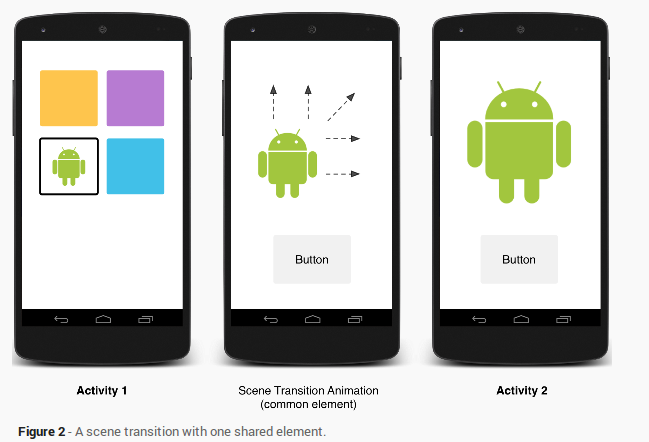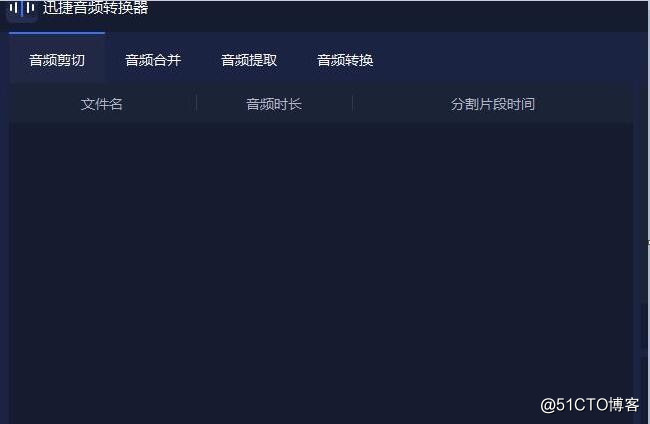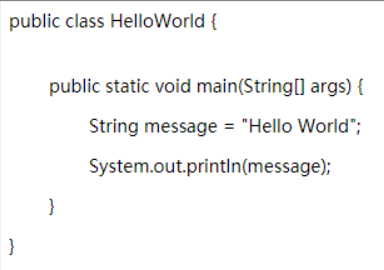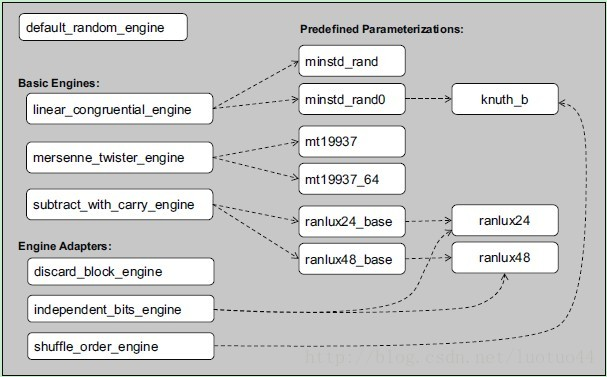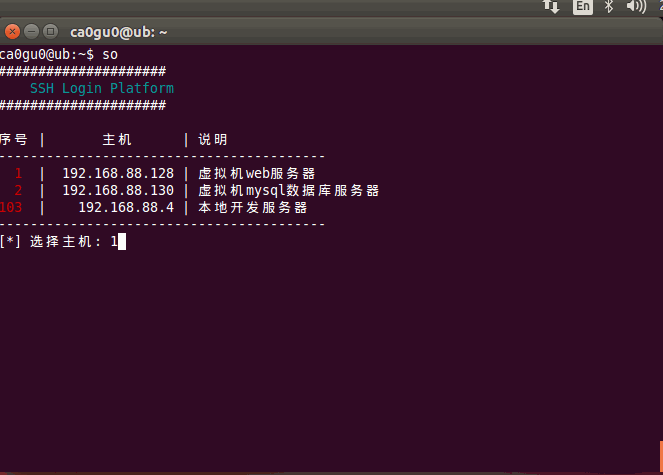2019独角兽企业重金招聘Python工程师标准>>> 
AOP的基本概念
连接点( Jointpoint) : 表示需要在程序中插入横切关注点的扩展点,连接点可能是类初始化、方法执行、 方法调用、字段调用或处理异常等等, Spring 只支持方法执行连接点, 在 AOP 中表示为“在哪里干” ;
切入点( Pointcut) : 选择一组相关连接点的模式, 即可以认为连接点的集合,Spring 支持 perl5 正则表达式和 AspectJ 切入点模式, Spring 默认使用 AspectJ 语法, 在 AOP 中表示为“在哪里干的集合” ;
通知( Advice) : 在连接点上执行的行为, 通知提供了在 AOP 中需要在切入点所选择的连接点处进行扩展现有行为的手段; 包括前置通知( before advice)、后置通知(after advice)、环绕通知( around advice), 在 Spring 中通过代理模式实现AOP,并通过拦截器模式以环绕连接点的拦截器链织入通知; 在 AOP 中表示为“干什么”;
方面/切面( Aspect): 横切关注点的模块化,可以认为是通知、引入和切入点的组合; 在 Spring 中可以使用 Schema 和@AspectJ 方式进行组织实现; 在 AOP 中表示为“在哪干和干什么集合”
引入( inter-type declaration) : 也称为内部类型声明, 为已有的类添加额外新的字段或方法, Spring 允许引入新的接口(必须对应一个实现)到所有被代理对象(目标对象) , 在 AOP 中表示为“干什么(引入什么) ” ;
目标对象( Target Object) : 需要被织入横切关注点的对象,即该对象是切入点选择的对象,需要被通知的对象,从而也可称为“被通知对象”;由于 Spring AOP通过代理模式实现,从而这个对象永远是被代理对象, 在 AOP 中表示为“对谁干” ;
AOP 代理( AOP Proxy) : AOP 框架使用代理模式创建的对象,从而实现在连接点处插入通知(即应用切面) ,就是通过代理来对目标对象应用切面。在 Spring中, AOP 代理可以用 JDK 动态代理或 CGLIB 代理实现,而通过拦截器模型应用切面。
织入( Weaving) : 织入是一个过程,是将切面应用到目标对象从而创建出 AOP代理对象的过程, 织入可以在编译期、类装载期、运行期进行。
Spring有哪些通知类型呢?
前置通知( Before Advice) :在切入点选择的连接点处的方法之前执行的通知,该通知不影响正常程序执行流程(除非该通知抛出异常,该异常将中断当前方法链的执行而返回)。
后置通知( After Advice) : 在切入点选择的连接点处的方法之后执行的通知,包括如下类型的后置通知:
后置返回通知( After returning Advice) :在切入点选择的连接点处的方法正常执行完毕时执行的通知, 必须是连接点处的方法没抛出任何异常正常返回时才调用后置通知。
后置异常通知( After throwing Advice) : 在切入点选择的连接点处的方法抛出异常返回时执行的通知, 必须是连接点处的方法抛出任何异常返回时才调用异常通知。
后置最终通知( After finally Advice) : 在切入点选择的连接点处的方法返回时执行的通知,不管抛没抛出异常都执行,类似于 Java 中的 finally 块。
环绕通知( Around Advices): 环绕着在切入点选择的连接点处的方法所执行的通知,环绕通知可以在方法调用之前和之后自定义任何行为,并且可以决定是否执行连接点处的方法、替换返回值、抛出异常等等。
在 AOP 中,通过切入点选择目标对象的连接点,然后在目标对象的相应连接点处织入通知,而切入点和通知就是切面(横切关注点),而在目标对象连接点处应用切面的实现方式是通过 AOP 代理对象。
基于注解的AOP编程
基于注解的编程,需要依赖AspectJ框架(java中最流行的aop框架)。 第一步:导入AspectJ的jar包,该框架只有Spring 2.0以上才支持。
<dependency><groupId>org.aspectj</groupId><artifactId>aspectjrt</artifactId><version>1.7.3</version>
</dependency>
<dependency><groupId>org.aspectj</groupId><artifactId>aspectjweaver</artifactId><version>1.7.3</version><scope>runtime</scope>
</dependency>
第三步:切面类,该类有什么特点?首先它必须是IOC的bean,还要声明它是AspectJ切面,最后还可以定义切面的优先级Order(非必填)
通知有五种注解 @Before :前置通知的注解,在目标方法执行前调用
@After:后置通知的注解, 在目标方法执行后调用,即使程序抛出异常都会调用
@AfterReturning:返回通知的注解, 在目标方法成功执行后调用,如果程序出错则不会调用
@AfterThrowing:异常通知的注解, 在目标方法出现指定异常时调用
@Around:环绕通知的注解,很强大(相当于前四个通知的组合),但用的不多。
环绕通知
import java.util.Arrays;
import java.util.List;/*** @program: ssm* @description: 环绕通知* @author: lee* @create: 2019-03-14**/
@Order(2)
@Aspect
@Component
public class AroundAspect {/*** 环绕通知,很强大,但用的不多。 用环绕通知测试Order的优先级看的不明显(这里是笔者的失误)* 环绕通知需要用ProceedingJoinPoint 类型的参数*/@Around("execution(* com.*.aspect.*.*(..))")public Object aroundAdvice(ProceedingJoinPoint joinPoint) {Object result = null;String methodName = joinPoint.getSignature().getName();List<Object> args = Arrays.asList(joinPoint.getArgs());try {System.out.println("@Around 前置通知 : 方法名 【 " + methodName + " 】and args are " + args);result = joinPoint.proceed();System.out.println("@Around 返回通知 : 方法名 【 " + methodName + " 】and args are " + args + " , result is " + result);} catch (Throwable e) {e.printStackTrace();System.out.println("@Around 异常通知 : 方法名 【 " + methodName + " 】and exception is " + e);}System.out.println("@Around 后置通知 : 方法名 【 " + methodName + " 】and args are " + args);return result;}
}
拦截对象
package com.plantform.aspect;import org.springframework.stereotype.Component;/*** @program: ssm* @description: 切面类* @author: lee* @create: 2019-03-14**/
public class AspectMethod {public int add(int a, int b) {System.out.println("add 方法执行了 ----> " + (a + b));return (a + b);}public int division(int a, int b) {System.out.println("division 方法执行了 ----> " + (a / b));return (a / b);}}
拦截通知
package com.plantform.aspect;import org.aspectj.lang.JoinPoint;
import org.aspectj.lang.annotation.*;
import org.springframework.core.annotation.Order;
import org.springframework.stereotype.Component;import java.util.Arrays;
import java.util.List;/*** @program: ssm* @Order(n) : 切面的优先级,n越小,级别越高* @Aspect:声明该类是一个切面* @Component:切面必须是 IOC 中的 bean* @author: lee* @create: 2019-03-14**/
@Order(1)
@Aspect
@Component
public class LogAspect {/*** 前置通知的注解,在目标方法执行前调用* execution最基础的表达式语法。* 注意点:* 1. 方法里面不能有行参,及add(int a, int b) 这是会报错的。* 2. int(方法的返回值),add(方法名) 可以用 * 抽象化。甚至可以将类名抽象,指定该包下的类。* 3. (int, int) 可以用(..)代替,表示匹配任意数量的参数* 4. 被通知的对象(Target),建议加上包的路径*/@Before(value = "execution(* com.*.aspect.*.*(..))")public void beforeAdvice(JoinPoint joinPoint) {/*** 连接点 joinPoint:add方法就是连接点* getName获取的是方法名,是英文的,可以通过国际化转换对应的中文比较好。*/String methodName = joinPoint.getSignature().getName();List<Object> args = Arrays.asList(joinPoint.getArgs());System.out.println("@Before 前置通知 : 方法名 【 " + methodName + " 】and args are " + args);}/*** 后置通知的注解, 在目标方法执行后调用,即使是程序出错都会调用* 这里将 方法的返回值 和 CalculatorImp类下所有的方法,以及方法的形参 都抽象了*/@After(value = "execution(* com.*.aspect.*.*(..))")public void afterAdvice(JoinPoint joinPoint) {String methodName = joinPoint.getSignature().getName();List<Object> args = Arrays.asList(joinPoint.getArgs());System.out.println("@After 后置通知 : 方法名 【 " + methodName + " 】and args are " + args);}/*** 重用切入点定义:声明切入点表达式。该方法里面不建议添加其他代码*/@Pointcut("execution(* com.*.aspect.*.*(..))")public void declareExecutionExpression(){}/*** 返回通知的注解, 在目标方法成功执行后调用,如果程序出错则不会调用* returning="result" 和 形参 result 保持一致*/@AfterReturning(value="declareExecutionExpression()", returning="result")public void afterRunningAdvice(JoinPoint joinPoint, Object result) {String methodName = joinPoint.getSignature().getName();List<Object> args = Arrays.asList(joinPoint.getArgs());System.out.println("@AfterReturning 返回通知 : 方法名 【 " + methodName + " 】and args are " + args + " , result is " + result);}/*** 异常通知的注解, 在目标方法出现指定异常时调用* throwing="exception" 和 形参 exception 保持一致 , 且目标方法出了Exception(可以是其他异常)异常才会调用。*/@AfterThrowing(value="declareExecutionExpression()", throwing="exception")public void afterThrowingAdvice(JoinPoint joinPoint, Exception exception) {String methodName = joinPoint.getSignature().getName();System.out.println("@AfterThrowing 异常通知 : 方法名 【 " + methodName + " 】and exception is " + exception);}
}
运行方法
/*** @program: ssm* @description:* @author: lee* @create: 2019-03-14**/
@Controller
public class MainAspect {@RequestMapping("/static/index")@ResponseBodypublic String main(String[] args) {AspectMethod aspectMethod=new AspectMethod();aspectMethod.add(11, 12);aspectMethod.division(21, 3);//aspectMethod.division(21, 0);return "执行完了";}
}
输出结果
@Before 前置通知 : 方法名 【 main 】and args are [null]
@Around 前置通知 : 方法名 【 main 】and args are [null]
add 方法执行了 ----> 23
division 方法执行了 ----> 7
@Around 返回通知 : 方法名 【 main 】and args are [null] , result is 执行成功
@Around 后置通知 : 方法名 【 main 】and args are [null]
@After 后置通知 : 方法名 【 main 】and args are [null]
@AfterReturning 返回通知 : 方法名 【 main 】and args are [null] , result is 执行成功
基于xml的AOP编程
第一步:核心文件applicationContext.xml, 首先是配置三个bean,方便是两个切面类,和一个方法类。 然后配置AOP, aop:config:注明开始配置AOP
aop:pointcut:配置切点重用表达式,expression的值是具体的表达式,id 该aop:pointcut的唯一标识,
aop:aspect:配置切面,ref的值引用相关切面类的bean,order设置优先级(也可以不设置)。
五种通知的配置:aop:before,aop:after,aop:after-returning,aop:after-throwing,aop:around。method的值就是对应的方法,poincut-ref的值要引用 aop:pointcut 的id。其中有两个比较特殊:aop:after-returning 要多配置一个returning,其中returning的值要和对应方法的形参保持一致。同理aop:after-throwing 也要多配置一个throwing,其中throwing的值也要和对应方法的形参保持一致。不然执行程序会报错。
<?xml version="1.0" encoding="UTF-8"?>
<beans xmlns="http://www.springframework.org/schema/beans" xmlns:xsi="http://www.w3.org/2001/XMLSchema-instance" xmlns:aop="http://www.springframework.org/schema/aop" xmlns:context="http://www.springframework.org/schema/context" xsi:schemaLocation=" http://www.springframework.org/schema/beans http://www.springframework.org/schema/beans/spring-beans.xsd http://www.springframework.org/schema/aop http://www.springframework.org/schema/aop/spring-aop-4.0.xsd http://www.springframework.org/schema/context http://www.springframework.org/schema/context/spring-context-4.0.xsd"> <bean id="calculator" class="com.atguigu.spring.my.xml.CalculatorImp"></bean> <bean id="loggerAspect" class="com.atguigu.spring.my.xml.LoggerAspect"></bean> <bean id="aroundAspect" class="com.atguigu.spring.my.xml.AroundAspect"></bean> <!-- AOP配置 --> <aop:config> <!-- 配置切点表达式 类似注解的重用表达式--> <aop:pointcut expression="execution(* com.atguigu.spring.my.xml.CalculatorImp.*(..))" id="pointcut"/> <!-- 配置切面及通知 method的值就是 loggerAspect类中的值--> <aop:aspect ref="loggerAspect" order="2"> <aop:before method="beforeAdvice" pointcut-ref="pointcut"/> <aop:after method="afterAdvice" pointcut-ref="pointcut"/> <aop:after-returning method="afterRunningAdvice" pointcut-ref="pointcut" returning="result"/> <aop:after-throwing method="afterThrowingAdvice" pointcut-ref="pointcut" throwing="exception"/> </aop:aspect> <aop:aspect ref="aroundAspect" order="1"> <!-- <aop:around method="aroundAdvice" pointcut-ref="pointcut"/> --> </aop:aspect> </aop:config> </beans>
下面几个类,就是脱去了所有注解的外衣,采用通过配置的xml,实现AOP编程。
public interface Calculator { public int add(int a, int b); public int division(int a, int b); } public class CalculatorImp implements Calculator { @Override public int add(int a, int b) { System.out.println("add 方法执行了 ----> " + (a + b)); return (a + b); } @Override public int division(int a, int b) { System.out.println("division 方法执行了 ----> " + (a / b)); return (a / b); } } import java.util.Arrays;
import java.util.List;
import org.aspectj.lang.JoinPoint; public class LoggerAspect { public void beforeAdvice(JoinPoint joinPoint) { String methodName = joinPoint.getSignature().getName(); List<Object> args = Arrays.asList(joinPoint.getArgs()); System.out.println("Before 前置通知 : 方法名 【 " + methodName + " 】and args are " + args); } public void afterAdvice(JoinPoint joinPoint) { String methodName = joinPoint.getSignature().getName(); List<Object> args = Arrays.asList(joinPoint.getArgs()); System.out.println("After 后置通知 : 方法名 【 " + methodName + " 】and args are " + args); } public void afterRunningAdvice(JoinPoint joinPoint, Object result) { String methodName = joinPoint.getSignature().getName(); List<Object> args = Arrays.asList(joinPoint.getArgs()); System.out.println("AfterReturning 返回通知 : 方法名 【 " + methodName + " 】and args are " + args + " , result is " + result); } public void afterThrowingAdvice(JoinPoint joinPoint, Exception exception) { String methodName = joinPoint.getSignature().getName(); System.out.println("AfterThrowing 异常通知 : 方法名 【 " + methodName + " 】and exception is " + exception); } } import java.util.Arrays;
import java.util.List;
import org.aspectj.lang.ProceedingJoinPoint; public class AroundAspect { public Object aroundAdvice(ProceedingJoinPoint joinPoint) { Object result = null; String methodName = joinPoint.getSignature().getName(); List<Object> args = Arrays.asList(joinPoint.getArgs()); try { System.out.println("@Around 前置通知 : 方法名 【 " + methodName + " 】and args are " + args); result = joinPoint.proceed(); System.out.println("@Around 返回通知 : 方法名 【 " + methodName + " 】and args are " + args + " , result is " + result); } catch (Throwable e) { e.printStackTrace(); System.out.println("@Around 异常通知 : 方法名 【 " + methodName + " 】and exception is " + e); } System.out.println("@Around 后置通知 : 方法名 【 " + methodName + " 】and args are " + args); return result; } } import org.springframework.context.support.ClassPathXmlApplicationContext; public class Main { public static void main(String[] args) { ClassPathXmlApplicationContext ctx = new ClassPathXmlApplicationContext("applicationContext.xml"); Calculator calculator = (Calculator) ctx.getBean("calculator"); calculator.add(11, 12); calculator.division(21, 3); // 测试时,将被除数换成0,可以测试AfterReturning ,After 和 AfterThrowing ctx.close(); } }
输出结果
Before 前置通知 : 方法名 【 add 】and args are [11, 12]
add 方法执行了 ----> 23
After 后置通知 : 方法名 【 add 】and args are [11, 12]
AfterReturning 返回通知 : 方法名 【 add 】and args are [11, 12] , result is 23
Before 前置通知 : 方法名 【 division 】and args are [21, 3]
division 方法执行了 ----> 7
After 后置通知 : 方法名 【 division 】and args are [21, 3]
AfterReturning 返回通知 : 方法名 【 division 】and args are [21, 3] , result is 7





